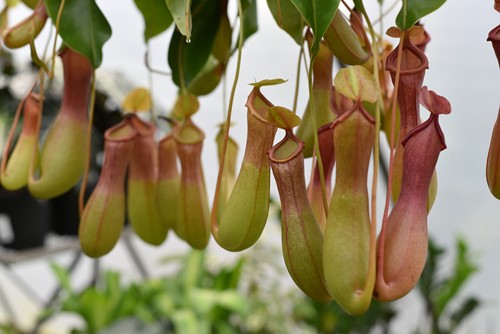
Sure, terrariums are vast and fascinating. But if you’re looking to kick it up a notch, try starting one for carnivorous plants. The easiest way to keep them happy is by building a terrarium all their own. Within that space, they can enjoy the perfect amount of light, humidity and tasty insects. Here’s what to do.
Although the Venus flytrap is the most popular carnivorous plant around and a great option for beginners, you have many others to consider as well, such as:
Pitcher plants
Sundews
Butterwort
Cobra lily
Dewy pine
Rainbow plant
To decide between your options, determine if you want active or passive eaters or a mix of both types. The pitcher plants, for example, passively attract and eat their prey, while Venus flytraps snap closed to catch their meals.
If you want multiple types of carnivorous plants, choose ones that will grow to be around the same size and have similar care needs. Otherwise, they won’t be able to thrive in your terrarium setup.
You’ll need to get your supplies next, starting with your ideal vessel. You can grow your plants in apothecary jars, glass globes, fish tanks or even purpose-built terrariums designed to look like houses and more. Just make sure that they are all glass or acrylic to let the light flow through from all angles.
Beyond that, you will need:
Sphagnum peat moss
Pure activated carbon
Rocks and other décor
Newspaper
Distilled water
You can let nature handle the lighting, warmth and feeding needs of your plants or take that into your own hands. If you prefer to handle all the details, get LED grow lights, heat mat and live mealworms as well.
To create your terrarium, start by putting a thin layer of pure activated carbon along the bottom. This will help control odors and protect your plants from any toxins in the peat moss, water or environment.
Over the carbon, add several scoops of peat moss to create a three- to four-inch base for your terrarium. Then, gently remove the plants from their original pots and arrange them how you’d like in your terrarium.
Use a little extra peat moss to completely bury their roots and give them more support, but do not pack it all down. Add your rocks and other décor around your plants to liven up the terrarium a bit.
Once you finish building your terrarium, you can put in it an area where it will get indirect light for most of the day. Give them enough distilled water to moisten the peat moss without making it too soggy.
They prefer boggy conditions but there shouldn’t be excess standing water around the roots. When you water, try to avoid getting the leaves and stems wet since they do not absorb moisture like other plants.

During her 25 years in the South Florida non-profit sector, helping others was always at the core of Danay's professional career. As a Realtor, she now uses her extensive background in client relations, financial management, and sales to help her clients in finding their dream home.
Whether buying or selling, what matters most to her is honest communication, extreme loyalty to her clients, and a direct, hands-on approach.
Raised in Miami, she has a personal connection to the local community and has extensive knowledge of the various cities and neighborhoods across the local market. Whether a seller or buyer, you will appreciate her attention to detail, negotiation skills, and motivation.
As a homeowner herself, she recognizes and values the trust clients place in realtors and she is dedicated to working tirelessly on behalf of her clients, making the process stress-free and exceeding their expectations.
Certifications:
Residential Real Estate Probate Specialist